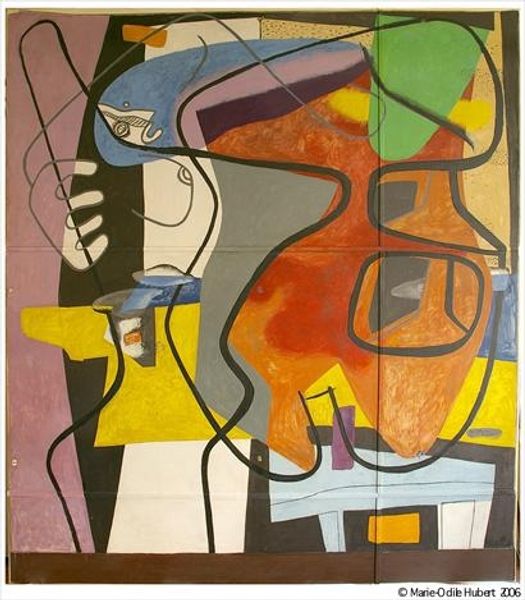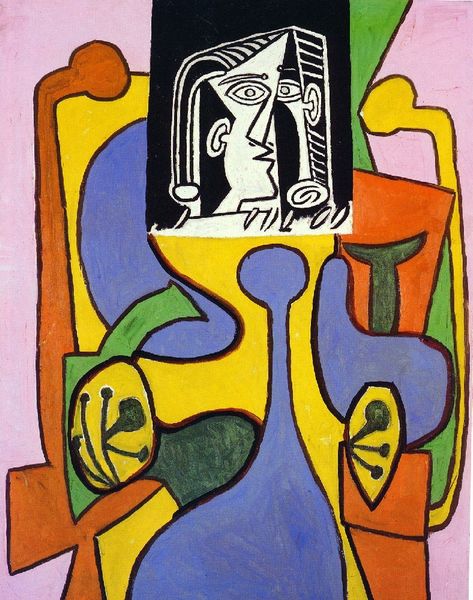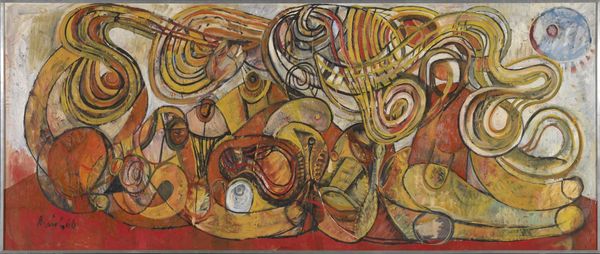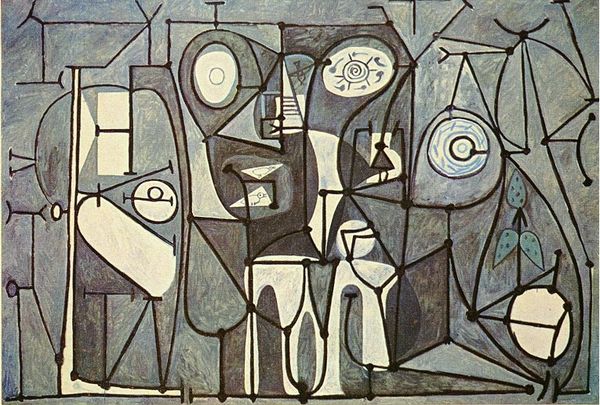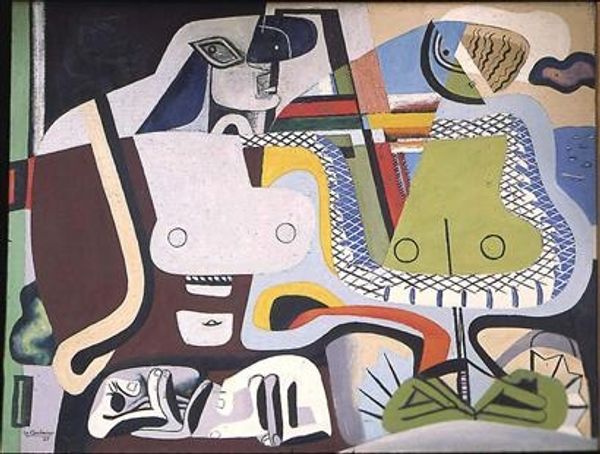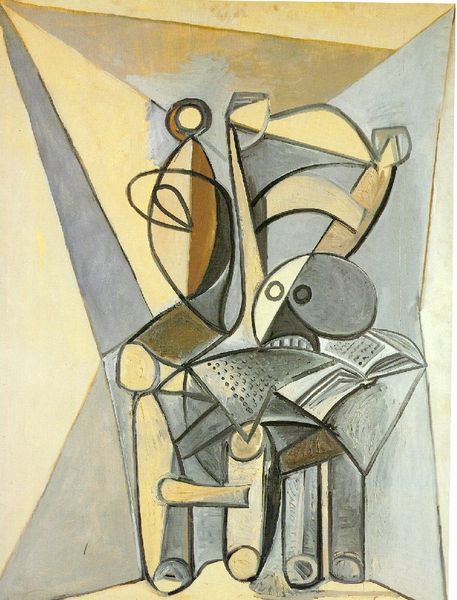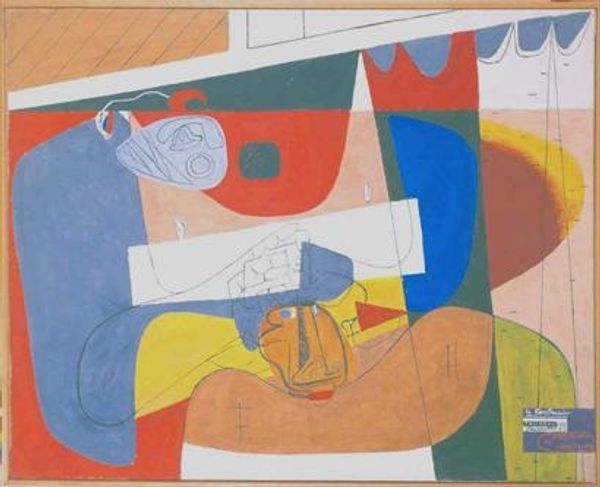
painting, acrylic-paint
#
portrait
#
cubism
#
abstract painting
#
painting
#
graffiti art
#
pop art
#
acrylic-paint
#
figuration
#
acrylic on canvas
#
abstraction
#
surrealism
#
modernism
Copyright: Le Corbusier,Fair Use
Curator: Here we have Le Corbusier’s “Carton pour tapisserie (Marie Cuttoli)” from 1936. It’s an intriguing composition. Editor: My first impression is a curious mix of playful and pensive. The bold, almost cartoonish lines clash intriguingly with the muted colors and contemplative figure. What strikes you most about its materiality? Curator: The application of acrylic, relatively new at the time, certainly contributes to the piece's texture. Look at the thickness and the layering—it really highlights the manual labor, and suggests a craft process far from conventional easel painting. Do you think its historical context is relevant to its making? Editor: Absolutely. Knowing this was conceived as a tapestry design, destined for Marie Cuttoli’s workshop, reframes the whole thing. Cuttoli championed modernist art through textiles. The socio-political factors drove wealthy patrons to blend 'high' art with artisanal practices, influencing production and blurring boundaries. Curator: Indeed! The use of traditionally "low" materials and its design for mass reproduction raise important questions about the value attributed to different forms of making. This almost defies the modernist obsession with artistic "genius" - or at least spreads that "genius" between Corbusier and the Cuttoli workshop staff. Editor: Exactly. Plus, the subject matter itself… Is it a portrait of the client or an abstracted figure study? This ambiguity suggests Corbusier using Cuttoli's commission as a testing ground, pushing figuration. One can wonder: How did her commissioning impact Corbusier's creative decisions? Curator: I am intrigued. The more one looks, the more questions arise about the economics and aesthetic hierarchies at play in 1930s France. Editor: Precisely, it invites us to reconsider the power structures shaping art production. Thanks for unraveling this work with me today, its production story certainly adds more layers of meaning for future exhibition considerations. Curator: An insightful exploration! Thank you as well.
Comments
No comments
Be the first to comment and join the conversation on the ultimate creative platform.

